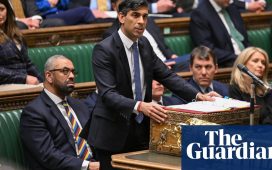 Image copyright
Image copyright
Reuters
Stephen Barclay and Michel Barnier met for Brexit talks in Brussels on Friday
The government has prepared the legal text of an updated Brexit deal, government sources have told the BBC.
It is expected to make more of the plans public in the next few days, a senior government figure says.
The government has suggested creating “customs clearance zones” in Northern Ireland and Ireland, as part of the proposals put to the EU.
Proposals for reaching a Brexit deal had been expected ahead of a crucial EU summit on 17 October.
The UK is due to leave the EU on 31 October, and Prime Minister Boris Johnson says this will happen whether or not there is a new deal with Brussels.
Mr Johnson says that he would prefer leaving with a deal.
At the Conservative party conference on Monday, he said: “I’m cautiously optimistic. We have made some pretty big moves, we are waiting to see whether our European friends will help us and whether we can find the right landing zone.”
MPs have passed a law requiring Mr Johnson to seek an extension to the deadline from the bloc if he is unable to pass a deal in Parliament, or get MPs to approve a no-deal Brexit, by 19 October.
Detailed plan
With the detailed proposals on the table, the UK side hopes that by the end of the week, both the EU and UK would be in a period of intense negotiations where both sides thrash out a final text.
But there is no certainty over whether the EU will accept the premise of the plans in order to move to the next phase of talks.
The biggest obstacle to a deal is the backstop – the plan to prevent a hard border between Northern Ireland and the Irish Republic.
The policy – agreed to by former PM Theresa May in her withdrawal deal with the EU, which was rejected three times by Parliament – is unacceptable to many Conservative MPs.
Since becoming prime minister, Mr Johnson has stressed to EU leaders the backstop would have to be replaced if any deal was to be passed by Parliament.
Mr Johnson has argued that the backstop would keep the UK too closely aligned with EU rules after Brexit.
The EU Commission has said it is willing to look at new proposals but these must achieve the same aims as the backstop – and be legally enforceable.
Sources involved in the negotiations with the EU say the checks proposed would not be at the Irish border, and suggestions there would be a series of checkpoints along the border are a misunderstanding.
Talks have continued between the UK and EU, at a technical level. Brexit Secretary Stephen Barclay and the EU’s chief negotiator, Michel Barnier met on Friday.
The BBC understands the proposals will accept the need for customs checks on the island of Ireland – but insist these checks, as the government previously pledged, would be conducted away from the border.
Customs formalities would be carried out mostly where goods originate or at their final destination.
The UK government maintains that any further customs inspections would be very limited – and these could be conducted either at new locations or at existing business premises.
The Irish broadcaster RTE had reported that a “string of customs posts perhaps five to 10 miles away from the frontier” had been floated by the UK.
However, government sources have denied that UK officials had proposed inspection posts on either side of the Irish border.















